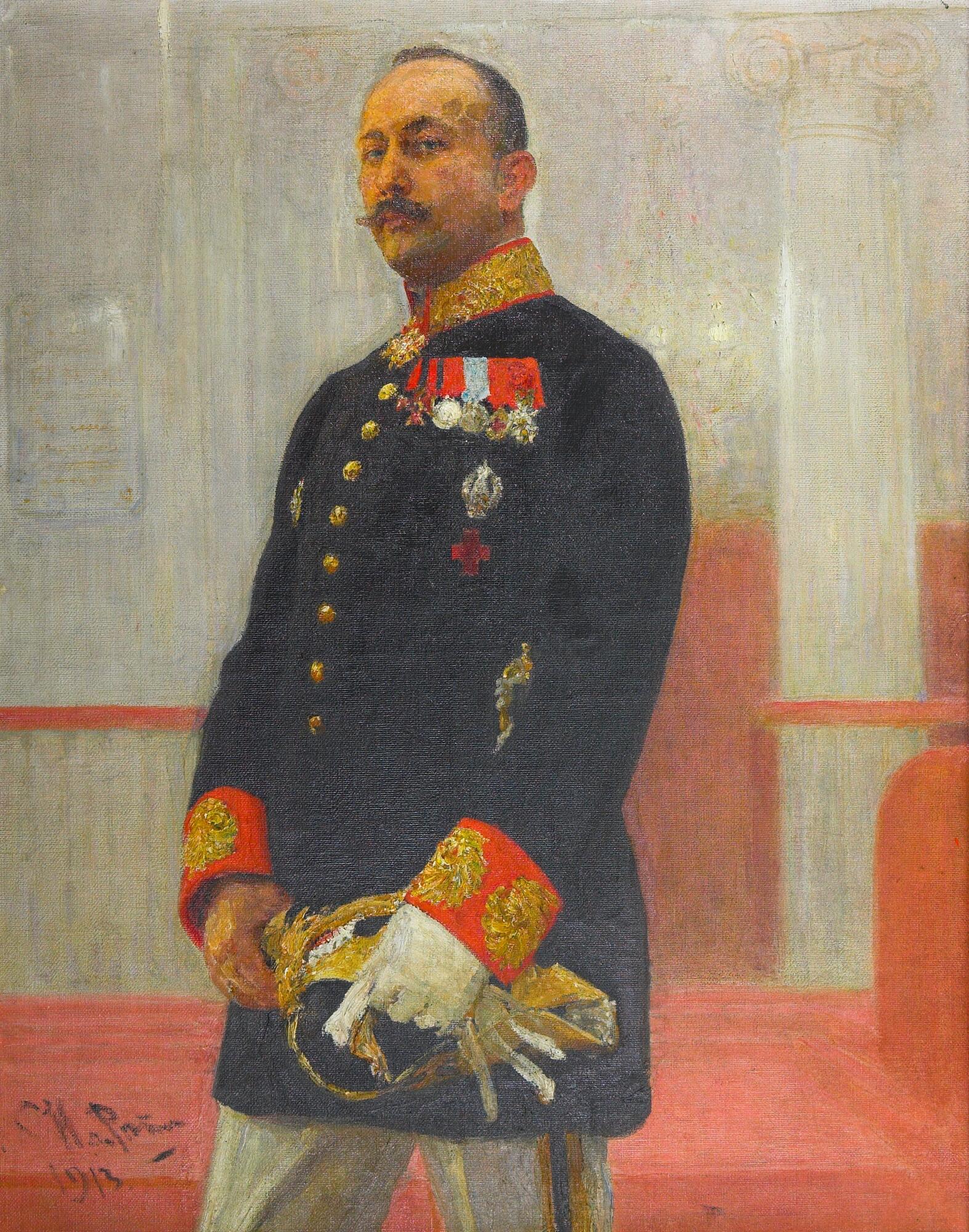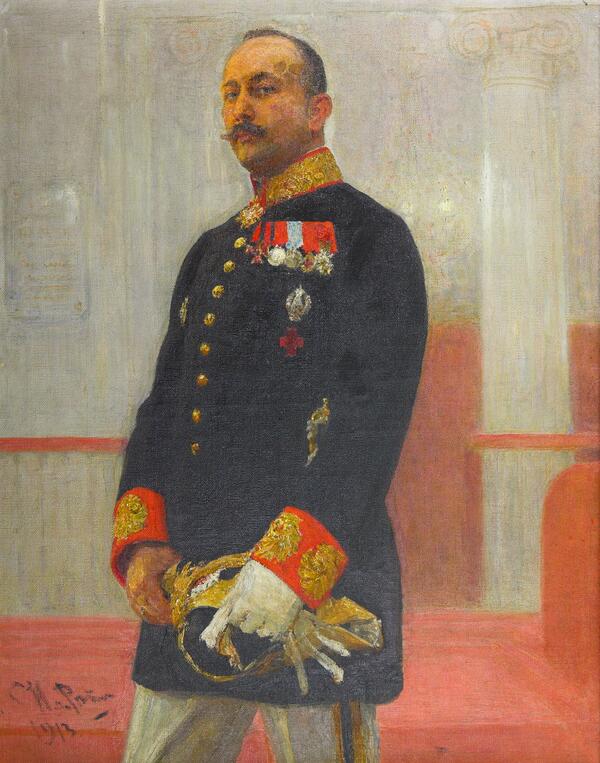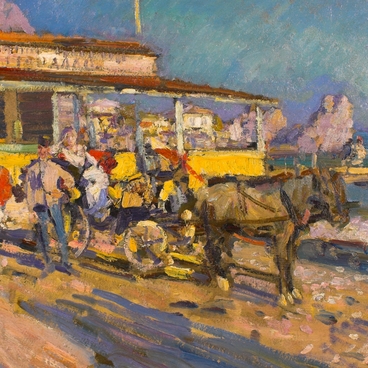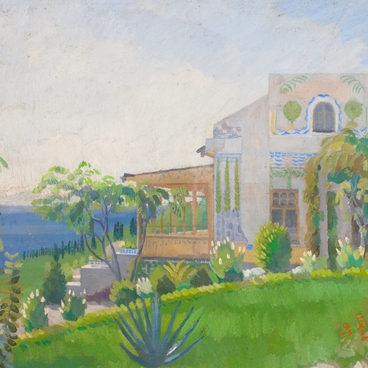Ilya Repin was a Russian painter, teacher, professor, full member of the Imperial Academy of Arts, one of the greatest masters of realism of the 19th century.
Repin started painting at an early age, when he was 16 he joined a travelling group of icon painters. However, Ilya Repin failed the first exam at the Imperial Academy of Arts. He decided not go home and he stayed in St. Petersburg, one year later he was enrolled as a student. His diploma work was a painting dedicated the story described in the Bible ‘Raising of Jairus’s daughter’ — Repin was awarded a gold medal and was offered the opportunity to go to Europe to study Western European art.
Since the 1870s, Repin has become one of the key figures of Russian realism. His painting style reflected a variety of trends: from the Spanish and Dutch masters of the 17th century to the French Impressionists — his contemporaries. The artist created genre paintings and landscape paintings, historical paintings and portraits of his contemporaries. Among the characters he depicted were peasants, aristocrats, royal officials, and friends from the Abramtsevo artistic society — writers and artists who visited the Savva Mamontov’s estate and worked there in the summer.
In total, Ilya Repin created about two thousand portraits. After two or three posing sessions he made a very detailed sketch, and then worked out the details. The artist carefully thought over all the details in the painting: anything on the canvas was supposed to correlate with the character and emphasize his personality. Korney Chukovsky recalled that Repin began to paint his portrait against the background of delicate golden-yellow silk, the subject of everyone’s admiration. Once the writer came to the studio and saw that the background was of his portrait was re-painted. Repin noted: “I”ve changed this silky background, because it doesn”t suit your character. You know, it”s not a “silk”.
Portrait of Vasily Gudovich by Repin was painted for the nonclassical secondary school in Tsarskoye Selo, the count was a trustee of this school from 1904 to 1907. Repin created a ceremonial portrait based on his best practices: this is evidenced by the pose of the model, and the refined colors, and the free painting manner. The count is depicted in his ceremonial uniform. The portrait’s angle comes a little from below: so the character looks at the audience from a higher point, and his figure looks majestic. The solemnity of the portrait is emphasized by the school hall in which the count is depicted: the ceremonial portraits were painted in official interiors, ordinary home interiors were unacceptable.
Repin started painting at an early age, when he was 16 he joined a travelling group of icon painters. However, Ilya Repin failed the first exam at the Imperial Academy of Arts. He decided not go home and he stayed in St. Petersburg, one year later he was enrolled as a student. His diploma work was a painting dedicated the story described in the Bible ‘Raising of Jairus’s daughter’ — Repin was awarded a gold medal and was offered the opportunity to go to Europe to study Western European art.
Since the 1870s, Repin has become one of the key figures of Russian realism. His painting style reflected a variety of trends: from the Spanish and Dutch masters of the 17th century to the French Impressionists — his contemporaries. The artist created genre paintings and landscape paintings, historical paintings and portraits of his contemporaries. Among the characters he depicted were peasants, aristocrats, royal officials, and friends from the Abramtsevo artistic society — writers and artists who visited the Savva Mamontov’s estate and worked there in the summer.
In total, Ilya Repin created about two thousand portraits. After two or three posing sessions he made a very detailed sketch, and then worked out the details. The artist carefully thought over all the details in the painting: anything on the canvas was supposed to correlate with the character and emphasize his personality. Korney Chukovsky recalled that Repin began to paint his portrait against the background of delicate golden-yellow silk, the subject of everyone’s admiration. Once the writer came to the studio and saw that the background was of his portrait was re-painted. Repin noted: “I”ve changed this silky background, because it doesn”t suit your character. You know, it”s not a “silk”.
Portrait of Vasily Gudovich by Repin was painted for the nonclassical secondary school in Tsarskoye Selo, the count was a trustee of this school from 1904 to 1907. Repin created a ceremonial portrait based on his best practices: this is evidenced by the pose of the model, and the refined colors, and the free painting manner. The count is depicted in his ceremonial uniform. The portrait’s angle comes a little from below: so the character looks at the audience from a higher point, and his figure looks majestic. The solemnity of the portrait is emphasized by the school hall in which the count is depicted: the ceremonial portraits were painted in official interiors, ordinary home interiors were unacceptable.



